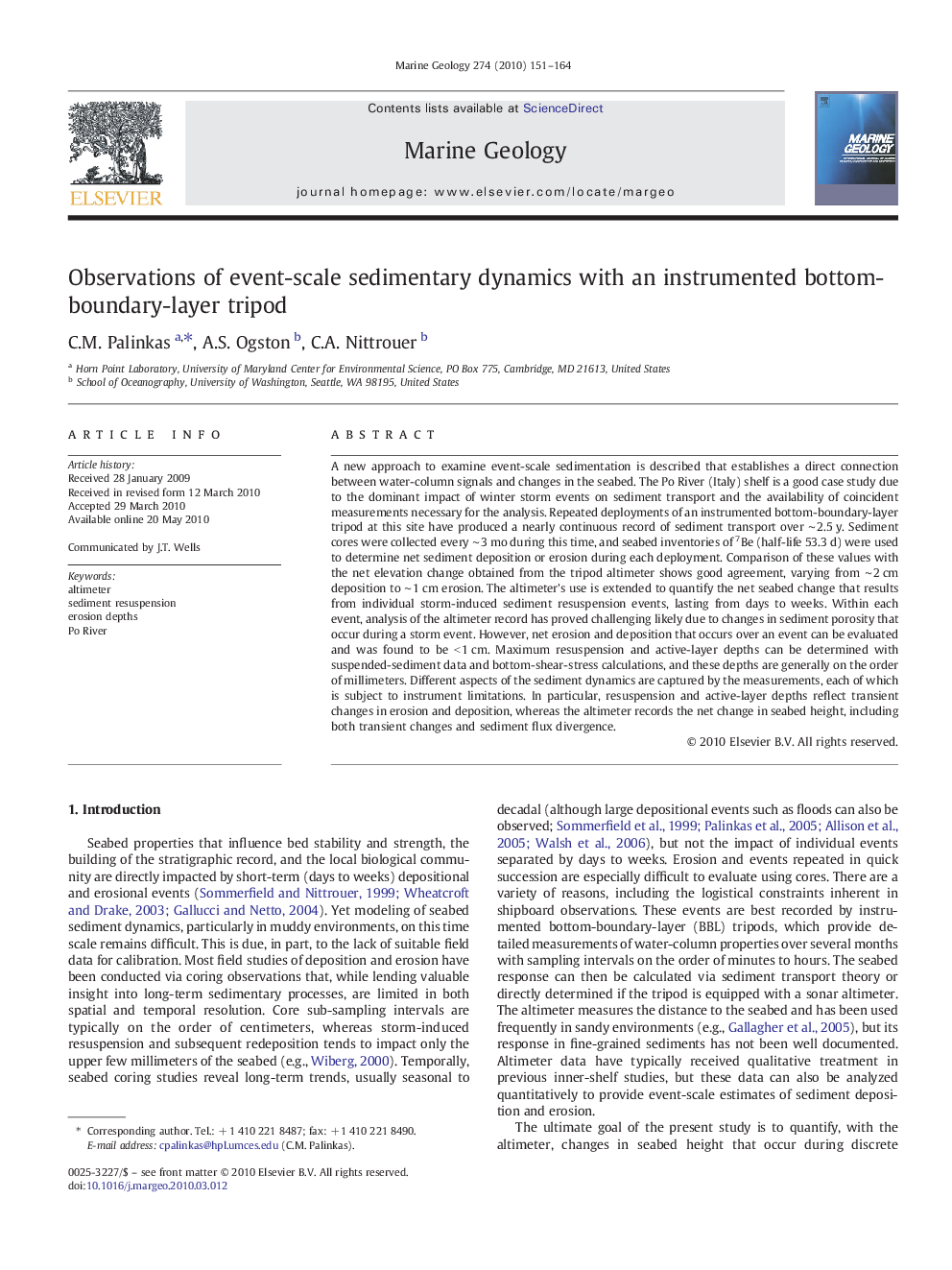| Article ID | Journal | Published Year | Pages | File Type |
|---|---|---|---|---|
| 4718933 | Marine Geology | 2010 | 14 Pages |
A new approach to examine event-scale sedimentation is described that establishes a direct connection between water-column signals and changes in the seabed. The Po River (Italy) shelf is a good case study due to the dominant impact of winter storm events on sediment transport and the availability of coincident measurements necessary for the analysis. Repeated deployments of an instrumented bottom-boundary-layer tripod at this site have produced a nearly continuous record of sediment transport over ∼ 2.5 y. Sediment cores were collected every ∼ 3 mo during this time, and seabed inventories of 7Be (half-life 53.3 d) were used to determine net sediment deposition or erosion during each deployment. Comparison of these values with the net elevation change obtained from the tripod altimeter shows good agreement, varying from ∼ 2 cm deposition to ∼ 1 cm erosion. The altimeter's use is extended to quantify the net seabed change that results from individual storm-induced sediment resuspension events, lasting from days to weeks. Within each event, analysis of the altimeter record has proved challenging likely due to changes in sediment porosity that occur during a storm event. However, net erosion and deposition that occurs over an event can be evaluated and was found to be < 1 cm. Maximum resuspension and active-layer depths can be determined with suspended-sediment data and bottom-shear-stress calculations, and these depths are generally on the order of millimeters. Different aspects of the sediment dynamics are captured by the measurements, each of which is subject to instrument limitations. In particular, resuspension and active-layer depths reflect transient changes in erosion and deposition, whereas the altimeter records the net change in seabed height, including both transient changes and sediment flux divergence.
